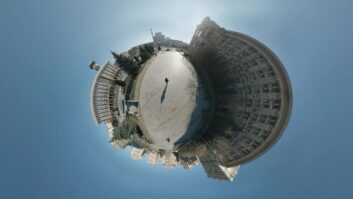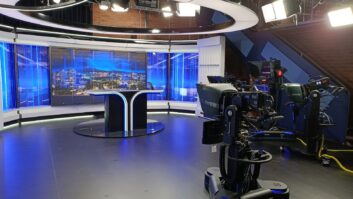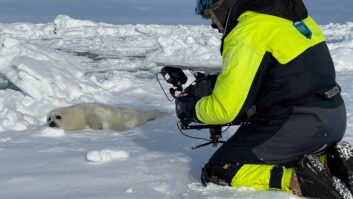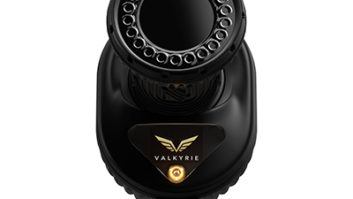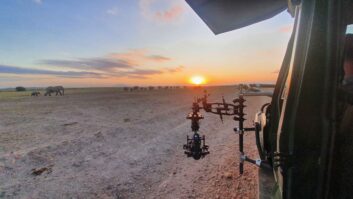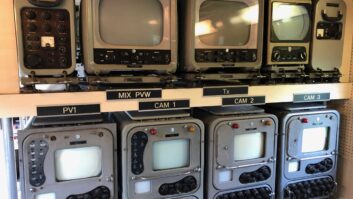BBC Studios has revealed some the technology used to film its latest natural history series, Frozen Planet II.
The series is the sequel to the original Frozen Planet, which aired on the BBC in 2011.
Presented by Sir David Attenborough, the production team return to the Arctic and Antarctic to observe the amazing species that thrive there, as well as exploring life beyond the Poles – witnessing the wildlife dramas that play out in all the world’s coldest regions: our high mountains, frozen deserts, snowbound forests, and ice-cold oceans.
The production team completed 102 shoots across the series, with 31 of those directed remotely using local crews.
The series involved 2188 filming days in the field across three years, with filming on every continent, across 18 different countries, all around Antarctica and in space. Filming was done in ultra high-definition.
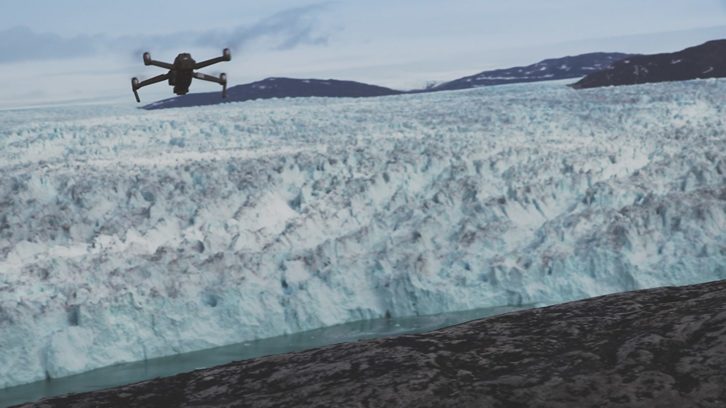
Drones
Drones were used to film both the landscape and an aerial view of animal behaviour in remote places:
- Light-weight drones enabled an aerial perspective on animal behaviour in situations where other aerial filming would have been disturbing to wildlife or logistically impossible;
- GPS-programmed drones were used to fly specific routes multiple times to capture changes in the landscape over time, even years, and reveal seasonal changes on the sea ice;
- High speed FPV (first-person view) ‘racer’ drones were deployed in order to fly down mountains alongside avalanches for the very first time in a TV documentary;
- Thermal drones were used to follow pumas hunting at night and enable the ground team to get into position.
High-definition remote camera traps
New 4K remote camera traps were employed across multiple locations where animals were too secretive to be filmed from a hide, including the giant Siberian tiger, the secretive Amur leopard and the wild giant pandas roaming the snow-covered forest scent marking trees as they search for food and potential mates.
Long term time-lapse cameras
Ruggedised timelapse cameras were deployed to glaciers across the world so that the team could document changes in ice over the course of filming. Locations include Svalbard, Antarctica, Greenland, and the Quelccaya glacier in the Peruvian Andes.
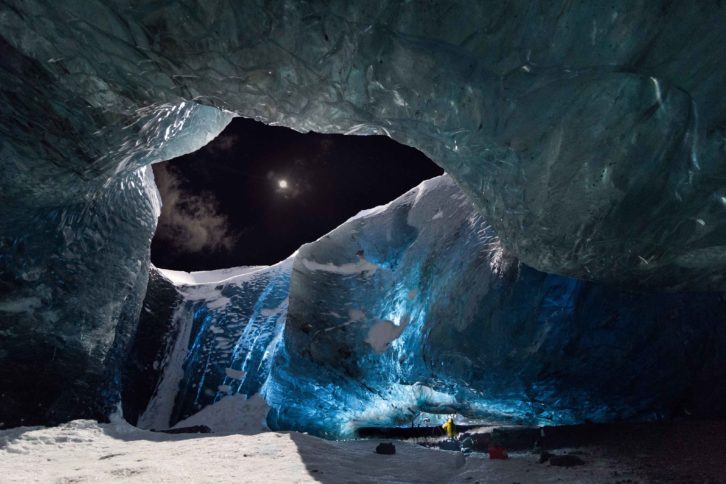
Timelapse and lapsed time from high altitude and space
The Frozen Planet II team worked with space imaging experts and scientists to document changes happening all across the frozen planet from space. For instance they used repeated photography from satellites to timelapse moulins forming on the Greenland ice sheet, document glaciers flowing and retreating in Greenland and South Georgia and sea ice disappearing during summer in the Arctic.
Old photographs of glaciers were used to compare to what they look today. Revisiting locations to match-frame and then blending between images the series reveals profound changes in glaciers from South Georgia and the European Alps.
Rebreather diving technology and pole cameras
Rebreathers don’t produce bubbles and are less disturbing to wildlife. They were crucial across all underwater sequences, said the BBC. For instance this allowed camera teams to get more intimate footage of harp seal pups learning to swim and Weddell seals interacting underwater. They also allow divers to stay underwater for longer periods of time which was critical in locations severely restricted by extreme weather.
Where conditions were too dangerous to dive, specialist pole cameras were designed and deployed allowing the camera operators to remain safely on the surface, yet film below it. These were also used around unpredictable animals.
The first episode of Frozen Planet II airs on BBC One on Sunday 11th September.
